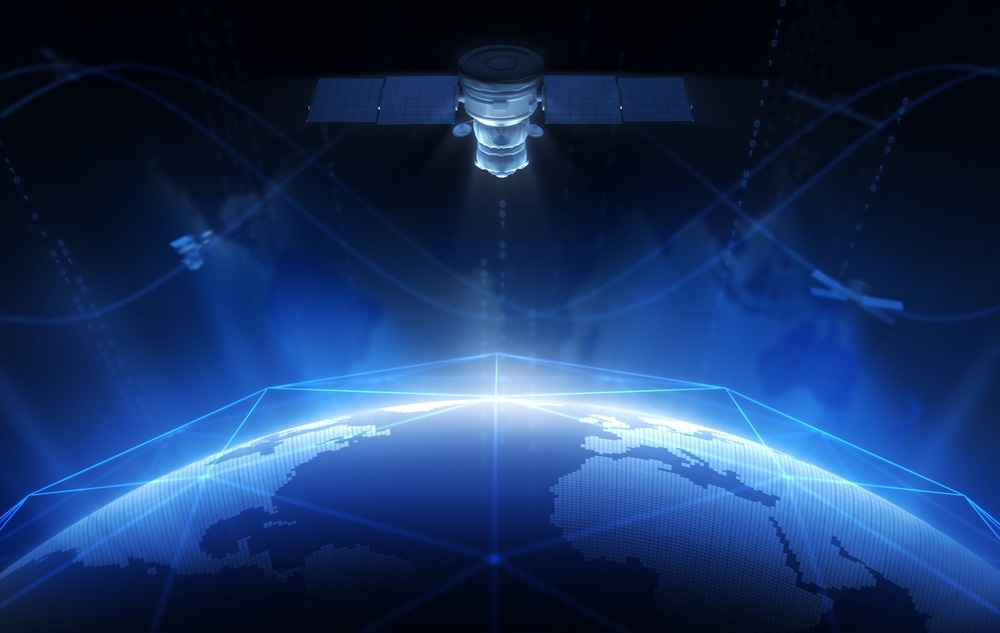The transference of quantum keys via satellites will provide the cybersecurity breakthrough of the future.

Image Credit: Andrey VP/Shutterstock.com
As computers become an increasingly important part of our everyday lives, vital for activities like banking and shopping, cybersecurity has never been more important.
One of the most robust applications of cybersecurity depends on the counter-intuitive nature of quantum physics to encrypt data which can then only be unlocked using ‘quantum keys’.
This well-established method called quantum encryption currently relies on the delivery of these keys via fiber, which has a significant distance limitation — currently set at around 100 kilometers.
This delivery system — called ‘quantum key distribution' (QKD) — is about to get a boost by heading into space. New proposals will demonstrate QKD from satellites in orbit around Earth and should provide cybersecurity that even future quantum computers with their massive computing power cannot break.
The transferring of quantum keys via satellites will therefore enable governments and companies to secure information transfers for backbone networks, critical infrastructure, and financial institutions, over the internet and across distances that span the globe.
This network is something that is difficult to achieve and extremely expensive to develop with traditional ground-based fiber internet.
This space-based approach is not ready to be implemented just yet, however. Space-based QKD must prove that satellites can send a reliable signal back to the ground, while the technology at its heart must be robust enough to operate in the harsh environment of space and be small enough to ensure that its launch is not cost-prohibitive.
One such platform is Speqtre, an innovative secure communications minisatellite or CubeSat being developed by the Science and Technology Facilities Council’s RAL Space in the UK, and a quantum communications company in Singapore called SpeQtral. But how will this and other QKD satellites work?
What is Quantum Key Distribution?
The UK Research and Innovation Center describe Quantum Key Distribution (QKD) as a mechanism for sending encryption keys between remote parties. This relies on the well-accepted and verified laws that govern quantum physics to ensure that the key has not been observed or tampered with in transit.
In QKD millions of polarized light particles or photons are transmitted from one party to another. Each photon is in a random quantum state and as a whole, the signal comprises a stream of ones and zeroes.
Let us call our signal receiver Alice and our photon sender Bob.
When the photons arrive with Alice she uses a beam splitter, which is used to analyze the polarizations of each photon. Which beam splitter — be it horizontal, vertical, or diagonal —she uses to ‘read’ the signal is guessed at by Alice.
She then tells Bob which beam splitter she used for each photon in the sequence in the order they were sent. Bob compares that information with the sequence of polarizers he used to send the photons.
He rejects the photons read using the wrong beam splitter and creates a unique sequence of ones and zeroes that becomes an optical key that can then be used to encrypt data to send to Alice, which only she should be able to read.
So far so good, but enter a third party — Eve (short for eavesdropper) — to try and incept and read the signal passing between Bob and Alice.
Is quantum key distribution unbreakable?
One of the key aspects of entangled photons used to create a quantum key is the fact that their entangled state is extremely delicate and easy to break.
This means that if Eve can incept the transmission between Bob and Alice, any attempt to read or even to copy the signal will cause the state of the photons to change.
This change will be detected by Alice and Bob and will alert them that the key has been intercepted by Eve, who has tampered with it. This prompts them to discard that key and send another. Because this new series of photons is randomly-generated, it means it isn’t compromised by Eve’s hacking attempt.
Additionally, the large size of the signal at the heart of QKD ensures that only a small number of ‘bits’ in the signal can be intercepted. This means Eve is not able to learn the entire sequence, and it is impossible to correctly guess the bit value because she does not know what beam-splitter was used for each photon.
In July 2022, Speqtre passed an important review bringing it a step closer to the milestone of its launch into space in 2024.
After this, the system will test the delivery of quantum keys from space to ground stations located at the Chilbolton Observatory in Hampshire, U.K., and another ground station based in Singapore.
If successful, these tests will no doubt spur the development of further QKD satellites, really bringing cybersecurity into the new space age.
References and Further Reading
Quantum encryption spacecraft closer to launch, [2022], UK Research and Innovation, [https://www.ukri.org/news/quantum-encryption-spacecraft-closer-to-launch/]
Quantum security technologies, [2022], [https://www.ncsc.gov.uk/whitepaper/quantum-security-technologies]
Disclaimer: The views expressed here are those of the author expressed in their private capacity and do not necessarily represent the views of AZoM.com Limited T/A AZoNetwork the owner and operator of this website. This disclaimer forms part of the Terms and conditions of use of this website.